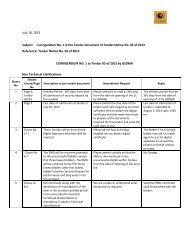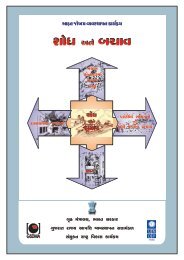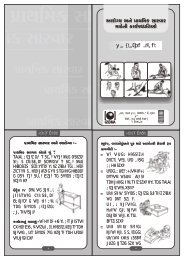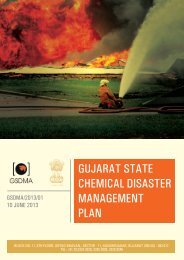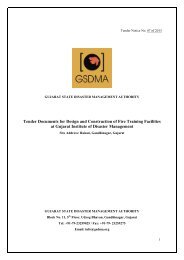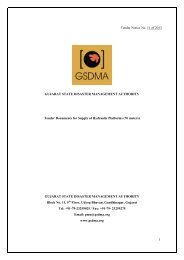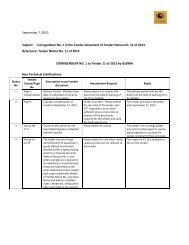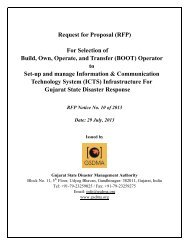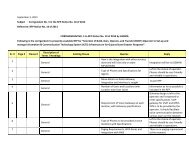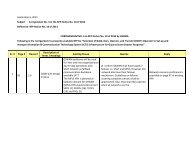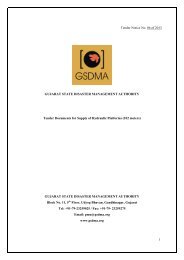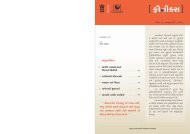Emergency Response Guidebook - Gujarat State Disaster ...
Emergency Response Guidebook - Gujarat State Disaster ...
Emergency Response Guidebook - Gujarat State Disaster ...
You also want an ePaper? Increase the reach of your titles
YUMPU automatically turns print PDFs into web optimized ePapers that Google loves.
NOTESINTRODUCTION TO GREEN TABLES - INITIAL ISOLATIONAND PROTECTIVE ACTION DISTANCESTable 1 - Initial Isolation and Protective Action Distances suggests distances useful to protectpeople from Vapours resulting from spills involving dangerous goods that are considered toxic byinhalation (TIH). This list includes certain chemical warfare agents and materials that producetoxic gases upon contact with water. Table 1 provides first responders with initial guidance untiltechnically qualified emergency response personnel are available.The Initial Isolation Zone defines an area SURROUNDING the incident in which persons may beexposed to dangerous (upwind) and life threatening (downwind) concentrations of material. TheProtective Action Zone defines an area DOWNWIND from the incident in which persons maybecome incapacitated and unable to take protective action and/or incur serious or irreversiblehealth effects. Table 1 provides specific guidance for small and large spills occurring day or night.Adjusting distances for a specific incident involves many interdependent variables and should bemade only by personnel technically qualified to make such adjustments. For this reason, noprecise guidance can be provided in this document to aid in adjusting the table distances;however, general guidance follows.Factors That May Change the Protective Action DistancesThe orange-bordered guide for a material clearly indicates under the section EVACUATION – Fire,the evacuation distance required to protect against fragmentation hazard of a large container. Ifthe material becomes involved in a FIRE, the toxic hazard may be less than the fire or explosionhazard. In these cases, the Fire hazard distance should be used.Initial isolation and protective action distances in this guidebook are derived from historical dataon transportation incidents and the use of statistical models. For worst-case scenarios involvingthe instantaneous release of the entire contents of a package (e.g., as a result of terrorism,sabotage or catastrophic accident) the distances may increase substantially. For such events,doubling of the initial isolation and protective action distances is appropriate in absence of otherinformation.If more than one tank car containing TIH materials involved in the incident is leaking, LARGE SPILLdistances may need to be increased.Page 286For a material with a protective action distance of 11.0+ km (7.0+ miles), the actual distance canbe larger in certain atmospheric conditions. If the dangerous goods Vapour plume is channeled ina valley or between many tall buildings, distances may be larger than shown in Table 1 due to lessmixing of the plume with the atmosphere. Daytime spills in regions with known strong inversionsor snow cover, or occurring near sunset, may require an increase of the protective action distancebecause airborne contaminants mix and disperse more slowly and may travel much fartherdownwind. In such cases, the nighttime protective action distance may be more appropriate. Inaddition, protective action distances may be larger for liquid spills when either the material oroutdoor temperature exceeds 30°C (86°F).Page 287



